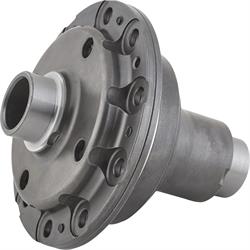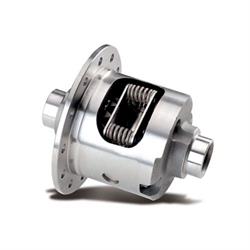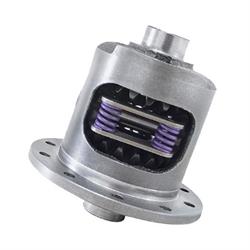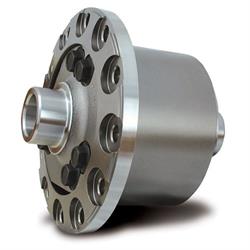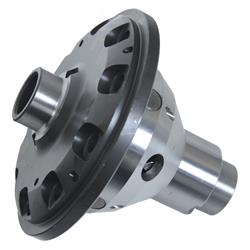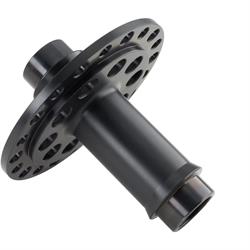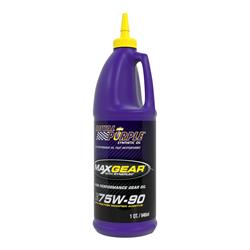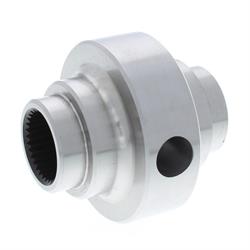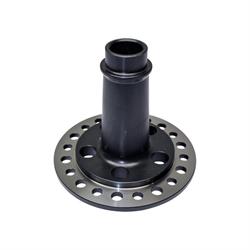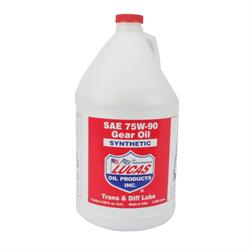Types of Differentials | Limited Slip vs Posi vs Locker
What exactly is a differential and why are there so many different types? A differential is the device inside your axle housing (live axle or independent) that allows one wheel to spin at a different rate than the opposing wheel. This occurs when the vehicle is turning, as the inside wheel travels a shorter distance than the outside wheel. If the two wheels were locked together, the inside wheel would chirp and squeal due to the wheel spinning too fast for the inside turning radius. This can actually push the vehicle through the corner instead of following the turning wheels.
There are three main types of differential: Open diff, LSD (Limited Slip), or Locker (locking differential). There is a fourth, which is a spool, but this is not a differential at all, as both axles are directly tied together. Both front and rear drive axles have differentials, but there are some differences in how they work. Most FWD diffs are either open or lockers. The locker may be manual (locking hubs), electronic (most factory 4WD vehicles use electronic front diffs), are pneumatic (air) operated. Some factory FWDs use LSD differentials, but they are always gear-style. More on that later, let’s get into the meat of each version.
What Does an Open Diff Mean?
An open differential has no positive connection between axles, instead a set of spider gears allow the axles to rotate independent of each other. For most vehicles, this is all you need. The inside tire can spin slowly while the outside tire spins faster, just as required by physics. The problem is that there is no connection between the two axles, so they can spin at different rates.
In any condition where traction is a concern, an open diff allows one tire to drive the vehicle, but the other side will sit idle. Often referred to as a “one-tire fire” or “peg-leg,” this is when you do a burnout and only one tire spins. If you want to put all your engine’s power to the ground, an open diff will not do it. So, let’s make the decision to ditch the peg-leg and get positive traction when you want it. Which one do you need?
What Is a Limited Slip Differential?
Positraction, which has become the defacto name for all LSDs, is actually the GM marketing name for an LSD or Limited-Slip Differential. An LSD allows the inside tire to spin freely in a turn but then syncs with the other axle in straight-line driving. This is achieved through either clutches or gears. Clutch-type LSDs use spring plates, and a series of clutches linked to each axle’s differential spider gears. When the inside axle spins slower than the outside axle, there is no resistance, so you get smooth turning.
Clutch-Style LSD Operation
In straight line action, things change. Floor it and as the differential spins, the clutch pack is pushed outward, tightening the grip of the clutches. As the torque increases, more compression is put on the clutches, locking the two axles together. These are available as 1-way, 1.5-way and 2-way LSDs.
- 1-way operates on acceleration only, locking only when the axles are under power.
- 1.5-way is a little different, this style locks in accel, and provides some slip in decel.
- 2-way LSDs are extremely popular for drifting, as these units operate in both accel and decel, so you can enter a turn, lift off the pedal, brake traction to initiate a drift, and then foot on the pedal and you will maintain tire spin. These require experience in operating, as they will lock the axles together at lower speeds than the other types of differentials.
Gear-Drive LSD Operation
A gear-driven LSD uses a different mechanism to lock the axles together. Instead of wear-prone clutches, the geared LSD uses differential bias to apply torque to either axle. As one wheel loses traction, the gears shift the torque to the axle with grip, essentially a “smart” LSD. In the event one tire loses all traction, it receives no torque. A quick tap of the brakes brings it back. For this reason, a geared LSD is not as desirable for drifting but is perfect for literally any other racing or driving situation.
Is Open Diff Better Than Limited Slip?
Let’s see, one tire spins or both tires drive in low traction scenarios: that’s the core difference in an open diff vs limited slip. LSD wins every time. There are drawbacks to an LSD. You need special gear oil or friction modifier that are safe for clutch based units. In some situations, any slip is bad, such as rock crawling, an LSD will still allow differential rotation. The clutches wear out (it takes a long time) in clutch-style LSDs. The style of LSD (1-, 1.5-, or 2-way) can cause some issues for some drivers as well.
What Is a Locker Differential and How Does It Work?
When you need true lockup but still need the differential to work, a center locking diff is the ticket. A locking differential means it locks both axles together when torque is applied, ensuring both wheels spin regardless of traction sending the same power to both wheels, all the time, under power. One side of the geared hub has angled ramps on the teeth. In a turn, the slower inside wheel puts pressure on the teeth, the angle ramp allows the hub to climb out of mesh, and the teeth pop out of sync and then click back into place. This allows the inside tire to spin slower.
Lockers are noisy and can feel harsh at times, but they work really well under straight-line motion, fully locking the axles together, no slip at all. Center locking diffs use torque to operate, making the operation a little erratic. The harsh realities of a locker require the driver to either adapt their driving style or simply live with erratic handling. Manual transmission cars are a touch worse than automatics, showing abrupt changes. As torque is applied, released, and applied again at every shift, you get more clunking and banging. As you accelerate out of a corner, the real issues come through. The locker will free wheel like an open diff until you hit the gas, applying torque, and the locker couples. This can cause oversteer or understeer, depending on the suspension, speed, and the road itself. These characteristics are even more pronounced in wet and snow/ice conditions; short-wheelbase and lightweight vehicles are more susceptible.
Lockers come in two primary colors: automatic and selectable. An automatic locker will open when there is little to no torque applied to the differential, for example an Eaton Detroit Locker. This happens in situations like cruising or low-speed cornering, where there is no power being applied. As soon as you hit the gas though, for example, by goosing the throttle out of a corner, the diff will lock. This can cause some handling issues, such as a sideways jerk as the locker engages. Auto lockers are very streetable, they just take some getting used to.
A selectable locker is operated either by air or electric solenoid. This is how the front differential in any modern 4WD vehicle operates. The diff is always open until you select 4WD, then an electric solenoid closes, locking the axles together until the solenoid is turned off. A pneumatic locker operates the same way, but with air pressure. These are not good for racing, as they tend to get damaged from the high, sudden stresses of drag racing. Selectable lockers are best suited for off-road vehicles. There is also a welded differential option, where you take an open diff and weld the spider gears together to create a “locker” on a budget, but this crude setup has poor street manners and is far less reliable than a purpose-built locker or posi.
Full Spool VS Mini Spool
You don’t like turning? No problem, get a spool differential. This is not a differential at all, instead, these are simply a ring gear carrier than locks both axles together, period. These are great for drifting and drag racing, but they do not work very well on the street. In a corner, the inside tire must spin as fast as the outside, and this means the tires must make up the difference. You get lots of chirps and squeals in a turn with a spool, and if you enter a turn too fast or hit the gas too soon, you can lose control very easily.
Spools come in two versions, full and mini. A full spool replaces the entire differential carrier, where a mini spool only replaces the spider gears with a small plum-sized hub that locks the axles together. Both are just as good as the other, the mini spool does not require any setup for the gears, it is drop-in unit, taking only 15 minutes to install in most applications.
Limited Slip vs Locker vs Spool | Which Differential Is Right for Your Build?
So, which one do you need? Unless you are drag racing or rock-crawling, an LSD is the go-to for just about any build. You can get an LSD that will serve your needs in a street-driven vehicle. Many LSDs have been purchased by those who previously bought a locker, that’s how noisy a locker can be. Lockers are best suited for high-horsepower street-strip cars, drag only, and off-road cars and trucks. Spools should only be used for dragsters or rock crawlers.
